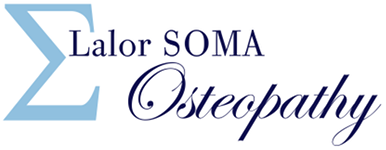With the vast majority of people now working from home, we are finding a number of people are experiencing back pain. In addition, another common presentation has been difficulty in walking such as walking with a limp, associated with underlying lower back, hip or knee pathologies.
The below offers general information. If you are experiencing any concerning signs and symptoms such as pain, upper limb/lower limb neurological symptoms (such as tingling, numbness or weakness) or difficulty in walking/walking with a limp, contact our practice.
As people are moving less and sitting more during this time, here are some useful tips:
Aim To Sit Less and Move More: Being at home more, we are finding people are reporting they are sitting far more than they normally would, such as spending their leisure time watching more television or sitting at the computer. We are also finding people are performing less unintentional exercise. People with conditions such as osteoarthritis typically can experience symptoms such as joint stiffness, particularly first thing in the morning or after prolonged periods of sitting. Even with these restrictions in place, try to make a conscious effort to move more often within comfortable limits. Whether it involves going for a walk around the block, taking time to perform the stretches your Osteo has recommended, playing with the kids in the backyard, or joining an online exercise class steamed live (such as the one offered by Whittlesea council) it’s important to remember now more than ever the body was designed to move!
Aim to Prevent Unnecessary Injury or Re-aggravation Of Underlying Conditions: With more people now at home, we are also finding they are spending more time working on small home renovations or rearranging and updating their furniture. It is great to refresh and update your living space from time to time, however prior to performing these activities take a moment to think of your back and spine. Be very mindful and aware of activities such as lifting. Lifting objects is a common cause for back pain and patients who have had conditions such as previously diagnosed lumbar disc bulges, should be aware of such activities known to cause re-aggravations. Other things to be aware of include activities involving repetitive actions. House hold duties and cleaning are examples where patients who have had a history of tennis elbow, carpal tunnel syndrome or shoulder bursitis, should be mindful when performing these types of activities as they are known to be aggravating factors.
Ensure effective desk, chair and computer monitor ergonomics: Now days some workplaces offer a health care professional on site, who can show an individual how to correctly set up their workstation effectively to suit their own individual needs, taking a number of factors into account such as a persons height, the number of monitors used, etc. At the moment however, as more people are working from home, it appears some have neglected their workstation set up. Here are some points to refresh your memory on things to consider:
> Ensure your desk chair is at the correct height for you.
> Ensure your desk chair offers you a good back support, where it allows your spine to rest against the back rest, with the aim here to prevent unnecessary poor posture (such as slouching/slumping forward).
> Ensure you are not over reaching for the keyboard or mouse, so as to limit unnecessary strain through the upper limbs.
> Ensure your monitor(s) are at an appropriate height for you and positioned correctly, this is particularly important to ensure the neck is positioned well, limiting any unnecessary neck strain.
> If your feet cannot reach the floor, use a footstool. Avoid crossing the legs or sitting on one leg!
> Remember to take breaks. Aim for 40min intervals. Taking a break means changing position. For example, make a conscious effort to stand up and go for a short walk to the backyard or to perform the stretches your Osteo has recommended, your spine will thank you for it!
Mums and Dads with Young Children: Being at home during this time offers the great advantage of seeing the little ones more throughout the day as they learn and play! Be mindful as babies and children are growing rapidly, they can quickly become quite a bit heavier. Try to consider ways in which you can put less strain and stress on your body. For example, when comforting your child consider placing them beside you on a couch rather then carrying them for prolonged periods or when feeding children take a moment to be aware of your spine and posture (such as aiming to avoid slouching and rounding of the shoulders, try to focus on keeping the back in a more upright neutral position).
Author: Dr Lana Andalis, Osteopath: B.App.Sci.(Comp Med)/M.Osteo
23.09.2020

